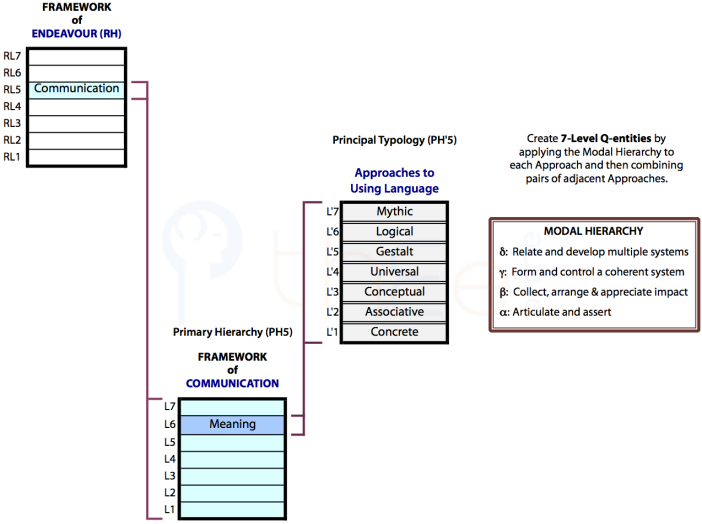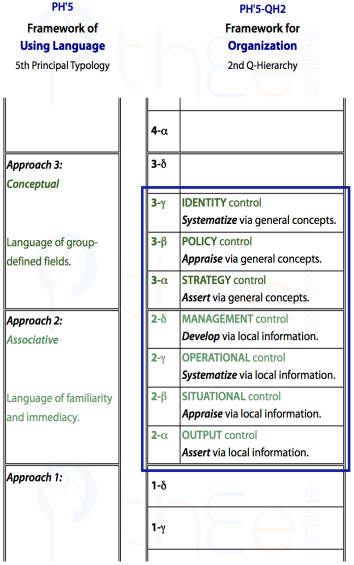THEE Path
This path is complex and leads to numerous Frameworks, identified with the prefix: Q-.
In the early days, I needed to understand the difference between the and other fundamental hierarchies with diverse formal properties that I was uncovering in and . Jaques and colleagues attributed a fundamental significance to their Organizational Work Levels Hierarchy. It is true that it is fundamental: but then all Frameworks within THEE are fundamental. Beck and co-workers clearly felt like Jaques when they called their Spiral Dynamics the «theory of everything». In THEE, it is the Root Hierarchy that is logically fundamental. However, before I discovered it, I had identified several of its Levels as Primary Hierarchies. So I referred to as a «Quasi-primary» Hierarchy. It became evident that «primary» did not apply at all, but I kept the label, Q- from «quasi-» for sentimental reasons.
Better viewing: Use browser zoom if needed.

This shows how Q-hierarchies are formed. You can see a similar path for the Interacting for Benefit framework. In that case no other Q-hierarchies were identified. In the present case, several Q-hierarchies have been determined, and strong conjectures have been developed for the others.
Origin: Root Cell: (not shown in diagram)
ACCEPT or EXAMINE
Emanate: Root Hierarchy ():
ACCEPT or EXAMINE
Select: Level-6 ():
ACCEPT or EXAMINE
Emanate:
ACCEPT or EXAMINE
Select: Level-6 ():
ACCEPT or EXAMINE
Nest within Level-6: : Principal Typology:
ACCEPT or EXAMINE
Expand with Modal Hierarchy : see explanation in this section.
Q-Condense: Form Q-hierarchies QH•![]() See an example.
See an example.
Derive:
Q Subsidiary Typology
QH• has its 7 levels from two adjacent Types in the Principal Typology as shown in the diagram. Types are intrinsically identity-defining and mentality-creating, and so are the Subsidiary Types.
Q-TET & Spiral
The QH•-TET differs from the Principal Typology TET in the location of the Types. The Spiral that derives from the TET shows a developmental progression identical to the original hierarchy.
QH-Tree
QH•K defines an interactive structure that corresponds with the dynamics of management within the organizational form.
QH-Structural Hierarchy
QsH• defines a system of components that ensure effective participation within the organization.
QH-Structural Hierarchy Tree
QsH•K defines an interactive structure that corresponds with the dynamics of participation within the organizational form.
- Start now with the essence of work.
Originally posted: 11-Oct-2013
